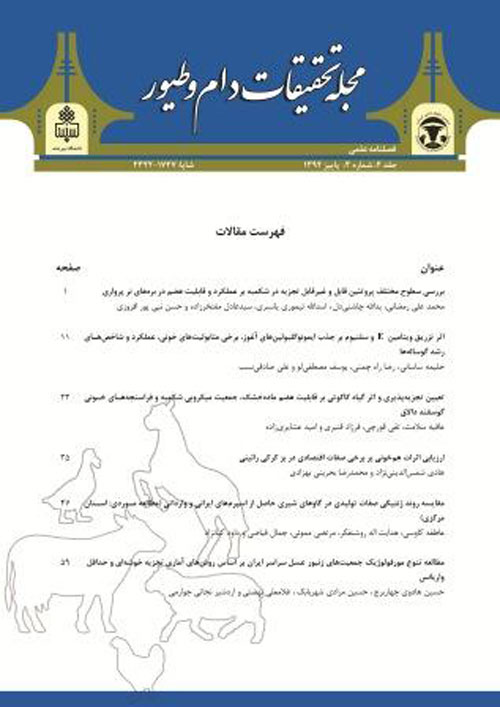Description of growth curve in Iranian sheep breeds using Gompertz nonlinear function
Author(s):
Abstract:
Growth traits in farm animals are of great economic importance. Today, growth rate, body weigh changes at different stages of the life, is considered as an important trait in animal breeding. Growth process can be described by a nonlinear function. In the present study, to describe the growth curve of different breeds of Iranian sheep, Gompertz nonlinear function was fitted on body weight records of 134,798 lambs (born between 1985-2010) from birth to 72 months of age. The lambs were progeny of 5,198 rams and 82,577 ewes in a total of 541 flocks. Growth curves of the breed, year and season of birth, sex of lamb, type of birth and dam age were predicted by using estimated parameters of the function. The findings showed Lori-Bakhtiari and Kermani breeds had highest (37.126 kg) and lowest (21.078 kg) mean body weight, respectively. Male lambs were found to be heavier than female lambs (29.956 kg vs. 27.921 kg). Older ewes (parity five and over) had heavier lambs than that of the younger ewes. The highest and lowest mean body weights were obtained for singleton (28.812 kg) and triplet (27.036 kg) lambs, respectively. Gompertz could provide a descriptive comparison for animal growth and to be utilised for predicting growth rate.
Keywords:
Language:
Persian
Published:
Journal of Livestock Research, Volume:3 Issue: 4, 2015
Pages:
22 to 38
https://magiran.com/p1439578


